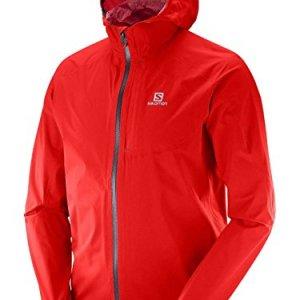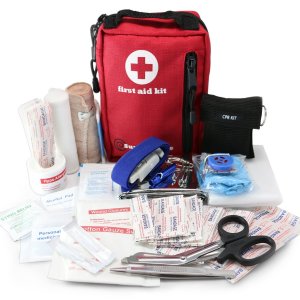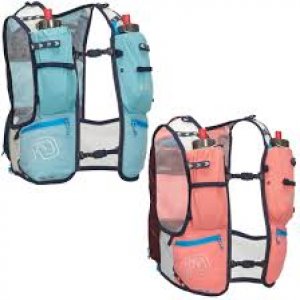What To Pack For an Ultra

Let’s be honest – running an ultramarathon ain’t for everyone… heck, it really is not even for most distance runners and endurance athletes! Ultras set the fun runners (and even the ‘dedicated’ runners) apart from the crazies – and we mean that affectionately and with all the love in the world! You have to be a little crazy to put your body through the process of training for an ultra marathon, and everything that comes along with preparing yourself and your body (and your family, for cryin’ out loud!) for one of the world’s toughest physical tasks. You are going to be pouring everything you have into your mental game and ‘staying the course’ (literally and figuratively) on race day. When the sun is blazing or the snow is blasting, and you are approaching mile 87 on what feels like the one millionth incline of the day, and your blistered ankles are basically numb at this point but you can still feel the blood oozing down and soaking into your sock, and the only words that your brain can seem to process and understand are ‘need sleep,’ ‘need rest’, ‘hungry’, and ‘ow,’… well, then the last thing you want to have to worry about is being unprepared in the way of what you packed for race day! There are handy ultra running kits that you can purchase and carry with you, but they tend to be pricey. You can always make your own, that is perfectly tailored to your preferences, depending on what your priorities are when it comes to necessities, and how little or much you want to carry on your back.

Nutrition – Food and Hydration
If you try and take the approach you usually take for nutrition with other races, you might face some tough times. That is due to 1) you might be one of those rare folks who prefer to run a half marathon (and maybe even a whole marathon) without consuming anything save the plastic cup of water at aid stations along the race route and 2) the distance of an ultra means your body is going to need way more fuel from your glycogen stores as back up, as well as more simple carbs that can be easily broken down and used immediately for energy. It’s important to have a range of macronutrients too, so that you don’t get bored (and have something to look forward to eating on the trail) and to keep yourself fueled as best as you can. Foods need to be easy to pack and non-perishable, too. It would be wise to test out different foods during your training, so you get to know your stomach better and what tends to agree (or disagree) with it. Energy bars and energy chews are great options. Quick sources of simple carbohydrates (think gummy and sweet candies that you can pop into your mouth easily, whole candy bars, and even simply packets of honey you can squeeze into your mouth) help give you short but fast bursts of energy. You will also need more substantial “meal” like foods too, if your stomach can handle it, to keep your calorie intake high. Pre-wrapped peanut butter and jelly sandwiches are the preferred option for a lot of folks – though I have heard of peanut butter and honey or Nutella, beef jerky and nuts, and even cold pizza slices! The key here is experiment, experiment, experiment! You definitely don’t want race day to be the first time you try out some of the foods you have planned to pack.
As far as hydration is concerned, you need both water and sports hydration fluids to replace electrolytes you lose through sweat. And that also means you will need water bottles in which to store them all. (More information on hydration packs, belts, and backpacks can be found below.) The most sensible thing would be to buy collapsible water bottles so that they can be carried and stowed away easily once they are empty. Make sure you get bottles that have an easy to sip top too – you will want to save your energy for the act of running, and use as little as possible to fuel and hydrate yourself. Several energy drink companies sell individual servings and tablets of their product that do not perish, but then dissolve easily in water – making them a great option for ultras. Alternatively, if you are a Gatorade or Powerade junky, then you can also just fill up a bottle with that. (I have even heard of ultra runners who drink a soda during their run, both for the sugar and for the caffeine. If this works for you, then DO IT but just don’t rely on it to keep you hydrated!)

Clothes
Ultramarathons typically mean hours of running, some of which are drug out over the course of multiple days. Weather conditions can be iffy, and often change at the blink of an eye, so you need to come prepared for whatever the sky might have in store. Waterproof layers are essential, especially if temperatures are going to drop and you need to have on long sleeves and pants. (However, it’s safest to just plan to run in a head to toe waterproof gear, including your undergarments. This will help prevent discomfort and chafing.) You also need to protect your hands, ears, and head with thick, waterproof gloves and hats/caps if it’s going to be cold – and even your face if it’s going to be REALLY cold. (And speaking of really cold, a survival blanket is a nifty item to have on hand not only if conditions take a turn for the worse and you get caught in a blizzard, but to have at the end of the race to cover up with.) An extra pair of socks is crucial if your feet become waterlogged, and a headlamp (with spare batteries!). And don’t forget the sunglasses! Or else risk fighting the sun’s glare for 50+ miles.

First-Aid
You absolutely, positively need to have a first-aid kit handy when running an ultra. Even if that means just packing the very basic, bare minimums. A pre-packed first aid kit is a great option, but if you want to make your own, make sure you throw in plenty of bandages (in several sizes and shapes), antibacterial cream or gel, aspirin, anti-diarrhea medicine, gauze and tape, a thick bandage to wrap up a swollen ankle or wrist, sunscreen and lip balm to protect your skin, and extra plastic bags for wet clothes or to keep things dry. And even though this might not technically fall into the traditional ‘first aid’ item line up, your phone, an on-the-go phone charger, and a map of the course is basically the new millennium’s definition of a first-aid essential.

Where To Put it All?
Ultra runners all have a preference when it comes to how they store and carry their essentials. You will find a plethora of options in this department, from belts and vests to specialty backpacks and hydration packs. And experimenting ahead of time might not be the most feasible option, as most can’t just go out and drop several hundred dollars on various packs to try out. Make a list of what you know you’ll need and want to bring, and what you might think you’ll need. Once you’ve settled on what you want to have with you, you can more easily choose the size and style that’s right for you. (Though, if you’re running a longer race that spans several days, you’re going to likely need a bigger backpack that can hold all of your clothes, AS WELL AS a hydration belt for fuel.)
Sources
- , 9 Things You Need to Do Before Your First Ultramarathon, RunnersConnect Blog
- , How to Pack for an Ultramarthon, RunnersWorld Blog
Latest Articles
 Is Running on a Treadmill Easier Than Running Outside?Runners have their own preferences, whether it is treadmill running, running outside on the road, or exploring trails. So...
Is Running on a Treadmill Easier Than Running Outside?Runners have their own preferences, whether it is treadmill running, running outside on the road, or exploring trails. So... Is It OK to Use Trail Running Shoes on the Road?While trail running shoes can be used on roads, especially in situations where a runner encounters mixed terrains or pref...
Is It OK to Use Trail Running Shoes on the Road?While trail running shoes can be used on roads, especially in situations where a runner encounters mixed terrains or pref... How to Fix Sore Quads After Running?Rest, ice, gentle stretching, and over-the-counter pain relievers can help soothe sore quads after running. Also, ensure ...
How to Fix Sore Quads After Running?Rest, ice, gentle stretching, and over-the-counter pain relievers can help soothe sore quads after running. Also, ensure ... 10 Fruits With The Most Electrolytes to Replace Sports DrinksThese fruits are high in electrolytes such as potassium, magnesium, and calcium, essential for hydration, muscle function...
10 Fruits With The Most Electrolytes to Replace Sports DrinksThese fruits are high in electrolytes such as potassium, magnesium, and calcium, essential for hydration, muscle function...

